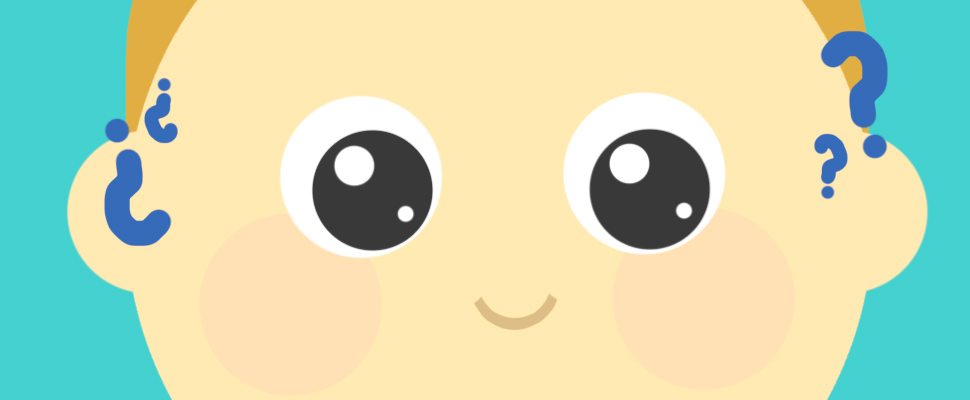How does a newborn sees?
Listen to this article
Have you ever wondered how a newborn sees? Since they are born, they have all the senses fully developed. Here we tell you more about it!

Formerly it was believed that newborn babies were completely blind. But different studies gave ground to this information and, nowadays, we know that the little ones have the senses much more developed than we think.
Leer en español: ¿Cómo ve un recién nacido?
What is the range of vision of a newborn?
According to Kids Health, while newborns keep their eyes closed most of the time during the first days of life, it doesn't mean they cannot see. Their range of vision is limited because the retina is not yet fully developed. The newborn babies perceive when there are changes in the light that surrounds them, that is to say, that they know when a light is turned on or the room where they are is completely dark. In addition, they can fix their gaze on defined points. This means that, if you bring a colorful and bright object close to their little face, the child will be able to see it and will look at it.
Surely you are thinking, how can you tell if your newborn baby looks good or not? The way to do it is very simple because the child will turn his head towards where he perceives the light although he can only see the objects clearly at 20 or 30 centimeters away. It is not yet known if the little ones see colors. Some theories claim that they only see black and white with gray scales.
At the end of the first month of life, the child can focus both eyes on the same object. The strabismus that, perhaps, scared you at first, disappears.
How do you see the baby as it grows?
A study published by the National Library of Medicine of the United States by Lea Hyvärinen, Renate Walthes, Namita Jacob, Kay Nottingham Chaplin, and Mercè Leonhardt, ensures that babies recognize and respond differently to faces. This means that they can recognize the face of their mother and father and know how to distinguish it from other people.
At 6 weeks of age, you can already have stable eye contact with the parents. Two months after birth, they are able to track any object. This will happen as long as he moves slowly about 60 centimeters away from his face. When the child is 10 weeks old, he can differentiate his mother's face and that of his father from the rest and discover his little hands. In addition, he can focus his eyes at any distance.
We recommend you read: Not lifting your baby when he or she cries can be a mistake
At the end of three months, the difference that exists regarding the first days of life in terms of the maturation of the ocular muscles is remarkable. This results in an increase in visual capacity, which allows them to differentiate the background from the rest of the object as long as it has contrasting colors. From the 4 months of life, there is an accelerated development of the vision of colors. In addition, the baby can already see at a greater distance. At 7 months, the baby is able to distinguish smaller objects at a distance, as well as following the movements of each thing in front of her eyes.
On the other hand, the newspaper "The Guardian" published an article that speaks of the preference of children regarding colors that would eliminate the belief that children see only in black and white. The researcher Alice Skelton affirmed that "babies cannot resist things in black and white". This gives us the idea that white and black are the colors that most attract attention.
The study started from that premise and is trying to find what colors babies can see exactly. Anna Franklin, director of the baby laboratory at the University of Sussex says that "it is a myth that babies see in black and white," noting that studies have found that newborns can see large, intense spots of red on a background Gray.
According to the research, the baby looks blurry when he is born and his visual acuity is only 5%. Stereoscopic vision is also not active because newborns are not able to perceive depth until a few months later and changes occur quickly. Alex Wade, a professor of psychology at the University of York who is an expert in visual processes, assures that "the first stages of learning to see color and basic shapes happen relatively quickly"
LatinAmerican Post | Marcela Antonacci
Translated from "¿Cómo ve un recién nacido?"





